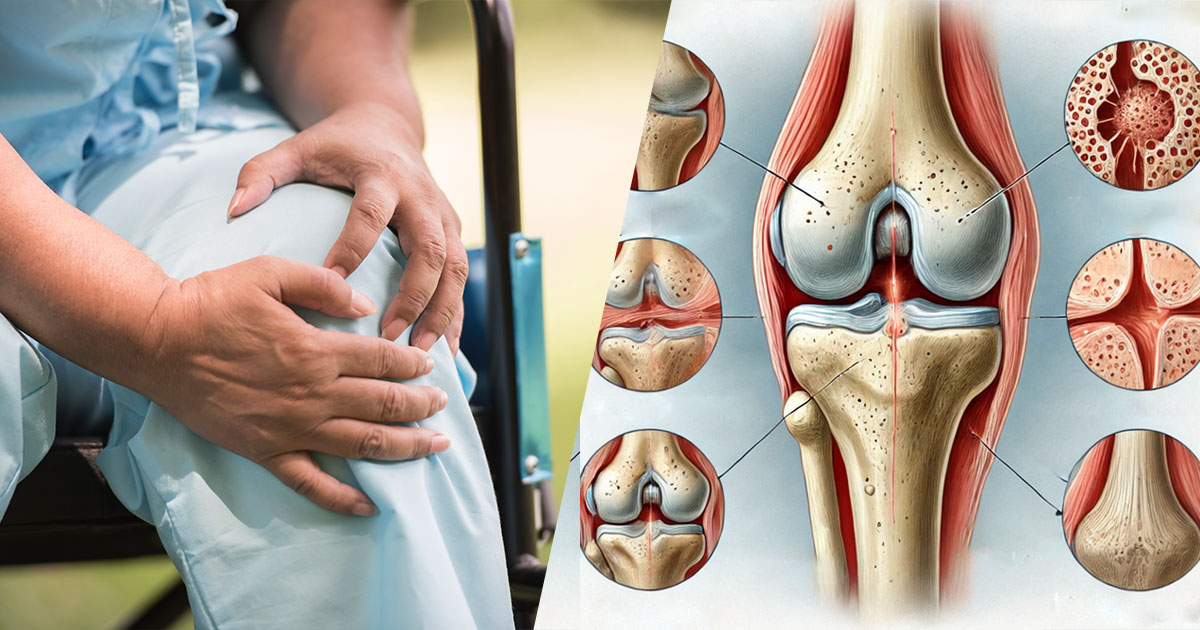Osteoarthritis is a degenerative joint condition that causes pain, swelling, and stiffness, affecting a person’s ability to move freely.
It impacts the entire joint, including the surrounding tissues. Osteoarthritis commonly affects the knees, hips, spine, and hands.
It is characterized by inflammation, stiffness, and pain in the joints, and is the most common type of arthritis, often referred to as “wear and tear” arthritis.
It is associated with the breakdown of cartilage and can occur in almost any joint in the body, though it most commonly affects the weight-bearing joints such as the hips, knees, and spine.
Types of Osteoarthritis
- Primary Osteoarthritis: This type develops over time, often due to the natural wear and tear on the joints from daily use.
- Secondary Osteoarthritis: This type results from an injury, disease, or deformity that affects the joint.
- Tricompartmental Osteoarthritis: This type affects the knee, which has three compartments: medial, lateral, and patellofemoral.
- Erosive Osteoarthritis (EOA): Typically affecting the hands, EOA is a more aggressive form of osteoarthritis.
- Other Types:
-
- Hip Osteoarthritis: Causes pain and stiffness in the hip joint.
- Spondylosis: Affects the spine, potentially involving any part of it.
- Shoulder Osteoarthritis: Affects the glenohumeral joint, the main ball-and-socket joint of the shoulder.
Causes of Osteoarthritis
Osteoarthritis can be classified as primary or secondary:
- Primary Osteoarthritis: Has no known cause and occurs naturally with aging.
- Secondary Osteoarthritis: Caused by an underlying disease, infection, injury, or deformity.
The condition begins with the breakdown of cartilage in the joint. As the cartilage wears down, the bones may thicken and form bony growths, known as bone spurs, which interfere with joint movement. Fragments of bone and cartilage may float in the joint space, and fluid-filled cysts can form in the bones, limiting joint movement.
Risk Factors for Osteoarthritis
- Poor posture
- Obesity
- Overuse of joints
- Previous joint injuries
- Family history
- Lack of physical activity
Symptoms of Osteoarthritis
- Joint swelling
- Aching and soreness, especially during movement
- Stiffness after periods of rest
- Pain after overuse or long periods of inactivity
- Bony enlargement in the middle and end joints of the fingers
Diagnosis of Osteoarthritis
The diagnosis of osteoarthritis is based on:
- The location and pattern of pain
- X-ray imaging
- A description of symptoms provided by the patient
- A physical examination
Treatment for Osteoarthritis
- Reduce inflammation
- Relieve symptoms
- Increase joint flexibility, mobility, and function
Treatment Options:
- Natural remedies such as yoga and cold/heat therapy
- Weight management
- Prescription medications like corticosteroids
- Physical therapy
- Over-the-counter (OTC) medications such as nonsteroidal anti-inflammatory drugs (NSAIDs)
- Assistive devices like knee braces
- Surgical options, including osteotomy
Complications of Osteoarthritis
- Bleeding near the joint (hemarthrosis)
- Erosion of ligaments and tendons or damage
- Osteonecrosis (bone death)
- Joint damage
- Hairline (stress) fractures
Prevention of Osteoarthritis
- Maintain a healthy weight
- Maintain good posture
- Eat a balanced diet rich in healthy fats like sunflower oil, soybeans, and seeds
- Ensure adequate vitamin D intake (sunlight is a natural source)
- Exercise regularly
- Manage blood sugar levels
- Monitor and control blood pressure
- Use proper techniques when lifting (lift with your hips and legs instead of your back)
- Wear proper footwear to reduce joint stress

